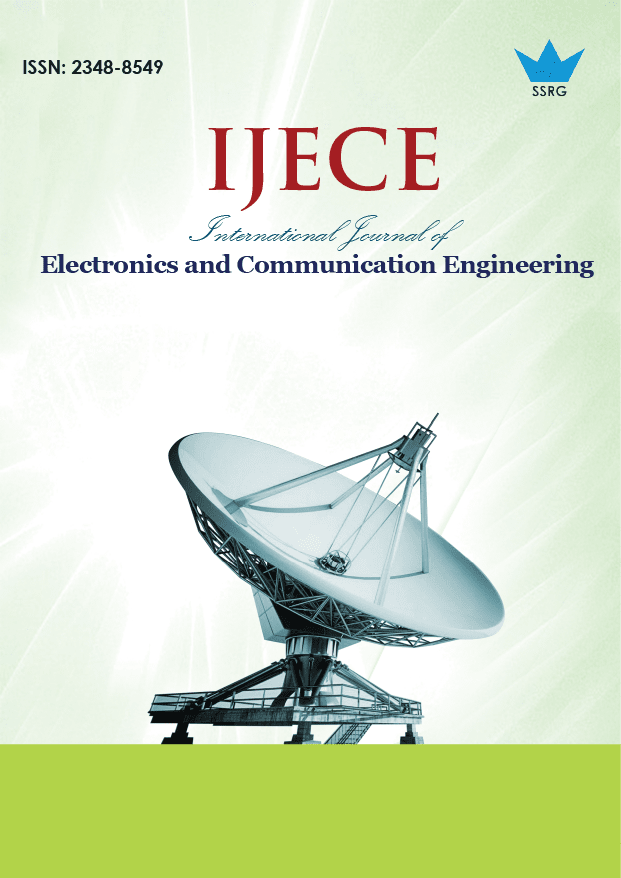Traceability and Verification to Prevent Counterfeit Drugs: A Secure, Efficient Pharma Supply Chain with IoT-Enabled Blockchain and Smart Contracts

| International Journal of Electronics and Communication Engineering |
| © 2025 by SSRG - IJECE Journal |
| Volume 12 Issue 1 |
| Year of Publication : 2025 |
| Authors : Rahul Konapure, Shankar Nawale |
How to Cite?
Rahul Konapure, Shankar Nawale, "Traceability and Verification to Prevent Counterfeit Drugs: A Secure, Efficient Pharma Supply Chain with IoT-Enabled Blockchain and Smart Contracts," SSRG International Journal of Electronics and Communication Engineering, vol. 12, no. 1, pp. 33-43, 2025. Crossref, https://doi.org/10.14445/23488549/IJECE-V12I1P103
Abstract:
Currently, the stakeholders involved in the pharma supply chain are manufacturers, distributors, retailers, and patients. The process is excessively complicated, offers minimum transparency and accountability, and appears poorly protected from counterfeiting. This paper proposes a novel integration of Internet of Things (IoT) sensors, blockchain technology, and Role-Based Access Control (RBAC), creating a transparent, immutable ledger that ensures the authenticity and visibility of drugs throughout the supply chain. IoT sensors provide real-time tracking of environmental conditions and moments of drugs, while blockchain technology ensures a secure, tamper-proof record of every transaction, enhancing traceability through the supply chain. Role-Based Access Control strengthens security by limiting access to sensitive data according to the roles of different stakeholders. The use of Smart contracts simplifies processes, as it removes intermediaries and ensures secure transaction histories. This integrated approach addresses counterfeiting and transforms pharmaceutical supply chain management by improving transparency, security, and efficiency. Enhanced blockchain performance facilitates more effective drug delivery, ultimately improving patient outcomes. By utilizing these advanced technologies, the proposed system significantly reduces risks associated with counterfeiting and supply chain disturbances, ensuring the delivery of safe and effective medications to patients.
Keywords:
Blockchain, Internet of Things, Pharma supply chain, Role-Based Access Control, Smart contract.
References:
[1] Petri Helo, and A.H.M. Shamsuzzoha, “Real-Time Supply Chain—a Blockchain Architecture for Project Deliveries,” Robotics and Computer-Integrated Manufacturing, vol. 63, 2020.
[CrossRef] [Google Scholar] [Publisher Link]
[2] Rajani Singh, Ashutosh Dhar Dwivedi, and Gautam Srivastava, “Internet of Things Based Blockchain for Temperature Monitoring and Counterfeit Pharmaceutical Prevention,” Sensors, vol. 20, no. 14, pp. 1-23, 2020.
[CrossRef] [Google Scholar] [Publisher Link]
[3] Nafisa Anjum, and Pramit Dutta, “Identifying Counterfeit Products using Blockchain Technology in Supply Chain System,” 2022 16th International Conference on Ubiquitous Information Management and Communication (IMCOM), Seoul, Korea, Republic of, pp. 1-5, 2022.
[CrossRef] [Google Scholar] [Publisher Link]
[4] Faisal Jamil et al., “A Novel Medical Blockchain Model for Drug Supply Chain Integrity Management in a Smart Hospital,” Electronics, vol. 8, no. 5, pp. 1-32, 2019.
[CrossRef] [Google Scholar] [Publisher Link]
[5] Aonghus J. Feeney, Jeffery A. Goad, and Gerard T. Flaherty, “Global Perspective of the Risks of Falsified and Counterfeit Medicines: A Critical Review of the Literature,” Travel Medicine and Infectious Disease, vol. 61, pp. 1-11, 2024.
[CrossRef] [Google Scholar] [Publisher Link]
[6] Gaurav Kumar Singh, and Manish Dadhich, “Supply Chain Management Growth with the Adoption of Blockchain Technology (BoT) and Internet of Things (IoT),” 2023 3rd International Conference on Advance Computing and Innovative Technologies in Engineering (ICACITE), Greater Noida, India, pp. 321-325, 2023.
[CrossRef] [Google Scholar] [Publisher Link]
[7] Satoshi Nakamoto, “Bitcoin: A Peer-to-Peer Electronic Cash System,” Report, pp. 1-24, 2008.
[Google Scholar] [Publisher Link]
[8] Hamed Taherdoost, “Smart Contracts in Blockchain Technology: A Critical Review,” Information, vol. 14, no. 2, pp. 1-19, 2023.
[CrossRef] [Google Scholar] [Publisher Link]
[9] Tanzeel Zaidi et al., “Fabrication of Flexible Role-Based Access Control Based on Blockchain for Internet of Things Use Cases,” IEEE Access, vol. 11, pp. 106315-106333, 2023.
[CrossRef] [Google Scholar] [Publisher Link]
[10] N. Ramkumar, G. Sudhasadasivam, and K.G. Saranya, “A Survey on Different Consensus Mechanisms for the Blockchain Technology,” 2020 International Conference on Communication and Signal Processing (ICCSP), Chennai, India, pp. 458-464, 2020.
[CrossRef] [Google Scholar] [Publisher Link]
[11] Md. Abdullah AI Noman et al., “An Intelligent Application for Preventing the Counterfeit Medicines Through a Distributed Blockchain,” 2021 3rd International Conference on Sustainable Technologies for Industry 4.0 (STI), Dhaka, Bangladesh, pp. 1-6, 2021.
[CrossRef] [Google Scholar] [Publisher Link]
[12] Nagasai Mudgala Chinni et al., “Counterfeit Drug Detection System with Multi-Layered Check and SCM using Blockchain,” 2022 6th International Conference on Computing Methodologies and Communication (ICCMC), Erode, India, pp. 61-65, 2022.
[CrossRef] [Google Scholar] [Publisher Link]
[13] Victoria Ahmadi et al., “Drug Governance: IoT-based Blockchain Implementation in the Pharmaceutical Supply Chain,” 2020 Sixth International Conference on Mobile and Secure Services (MobiSecServ), Miami Beach, FL, USA, pp. 1-8, 2020.
[CrossRef] [Google Scholar] [Publisher Link]
[14] S. Thejaswini et al., “Med Secure: A Blockchain based Authenticated System for Counterfeit Medicine in Decentralized Peer to Peer Network,” 2021 Asian Conference on Innovation in Technology (ASIANCON), PUNE, India, pp. 1-7, 2021.
[CrossRef] [Google Scholar] [Publisher Link]
[15] Mamun Ahmed et al., “Detection of Counterfeit Medicine Using a Private and Permissioned Blockchain,” 2022 2nd Asian Conference on Innovation in Technology (ASIANCON), Ravet, India, pp. 1-5, 2022.
[CrossRef] [Google Scholar] [Publisher Link]
[16] Basim Aljabhan, “A Comprehensive Analysis on the Adoption of IoT with Logistics and Supply Chain Management,” 2022 Second International Conference on Computer Science, Engineering and Applications (ICCSEA), Gunupur, India, pp. 1-6, 2022.
[CrossRef] [Google Scholar] [Publisher Link]
[17] Pingping Sun, and Lingang Gu, “Optimization of Cross-Border E-Commerce Logistics Supervision System Based on Internet of Things Technology,” Complexity, vol. 2021, pp. 1-11, 2021.
[CrossRef] [Google Scholar] [Publisher Link]
[18] G.O. Young, and J. Peters, Synthetic Structure of Industrial Plastics (Book Style with Paper Title and Editor), 2nd ed., McGraw-Hill, pp. 15-64, 1964.
[Google Scholar]

 10.14445/23488549/IJECE-V12I1P103
10.14445/23488549/IJECE-V12I1P103